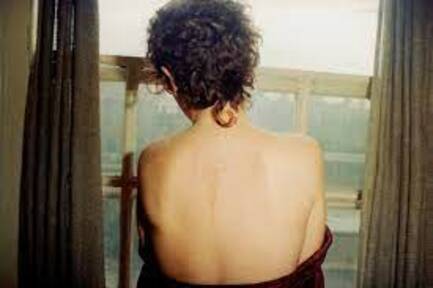Tonight I saw ‘All the Beauty and the Bloodshed’, a documentary by Laura Poitras on Nan Goldin and the fight against the Secklers, among other things.
In November Manohla Dargis wrote about this movie in NYT:
‘“All the Beauty and the Bloodshed,” Laura Poitras’s intimate documentary about Goldin, her art and her activism, starts onMarch 10, 2018. That day, Goldin brought her fight against members of the Sackler family to the Met with a protest that turned its popular Temple of Dendur exhibition — an Egyptian temple installed in a gallery named the Sackler Wing — into a symbolic battlefield. It was a clash that pitted the artist against members of a family that is both extraordinarily wealthy and, as the journalist Patrick Radden Keefe wrote in a 2017 New Yorker article, is “one of America’s great philanthropic dynasties.” It also pitted Goldin against the art establishment that had helped make her an international art star.’
(…)
‘As she testified before a House committee in 2020, Goldin became hooked in 2014 after being prescribed OxyContin for surgery. As her habit escalated — she went from three prescribed pills a day to 18 — she supplemented it by spending all the money from a private endowment. When she ran out of money for OxyContin, Goldin turned to illegal sources, nearly dying when she inadvertently snorted fentanyl.’
(…)
‘The movie’s bifurcated shape isn’t novel, but Poitras’s marshaling of all this information is exceptionally graceful. She has an abundance of fantastic material at her disposal — including a generous selection of Goldin’s artwork — but what makes the movie work so well is how Poitras seamlessly uses the different sections of Goldin’s life to weave a coherent portrait of the artist. You see how her tragic older sister, Barbara, who died young, shaped Goldin and how Barbara’s death and the family’s sometimes ghastly history helped determine Goldin’s artistic trajectory and led her to friends who informed her sensibilities and served as muses.’
Read the review here.
For once, I happen to agree with Manohla Dargis, AIDS, OxyContin, the sister of Nan, all come seamlessly together.
There is one scene where Nan’s mother reads a note found on the body of the sister who committed suicide, a quote from Joseph Conrad. (‘The most you can hope from it is some knowledge of yourself -- that comes too late -- a crop of inextinguishable regrets.’)
And there is the scene where three members of the Seckler family – you see only two of them – are forced to watched testimonies of victims of the family and their business.
You can only sympathize with the victims, but also there is this strange curiosity to know more about the Secklers. Their absence is as conspicuously as the absence of Nan's sister.
